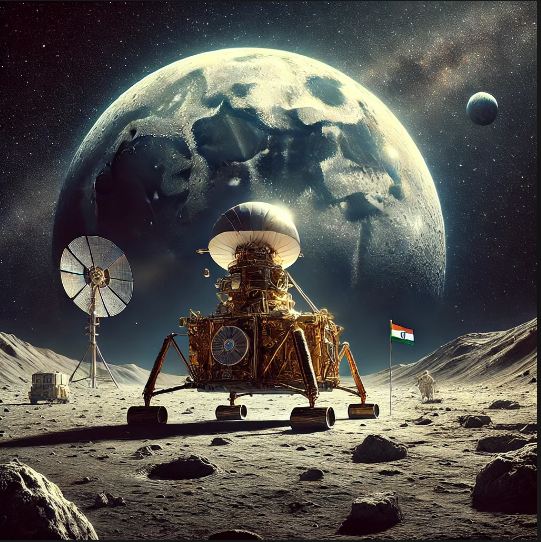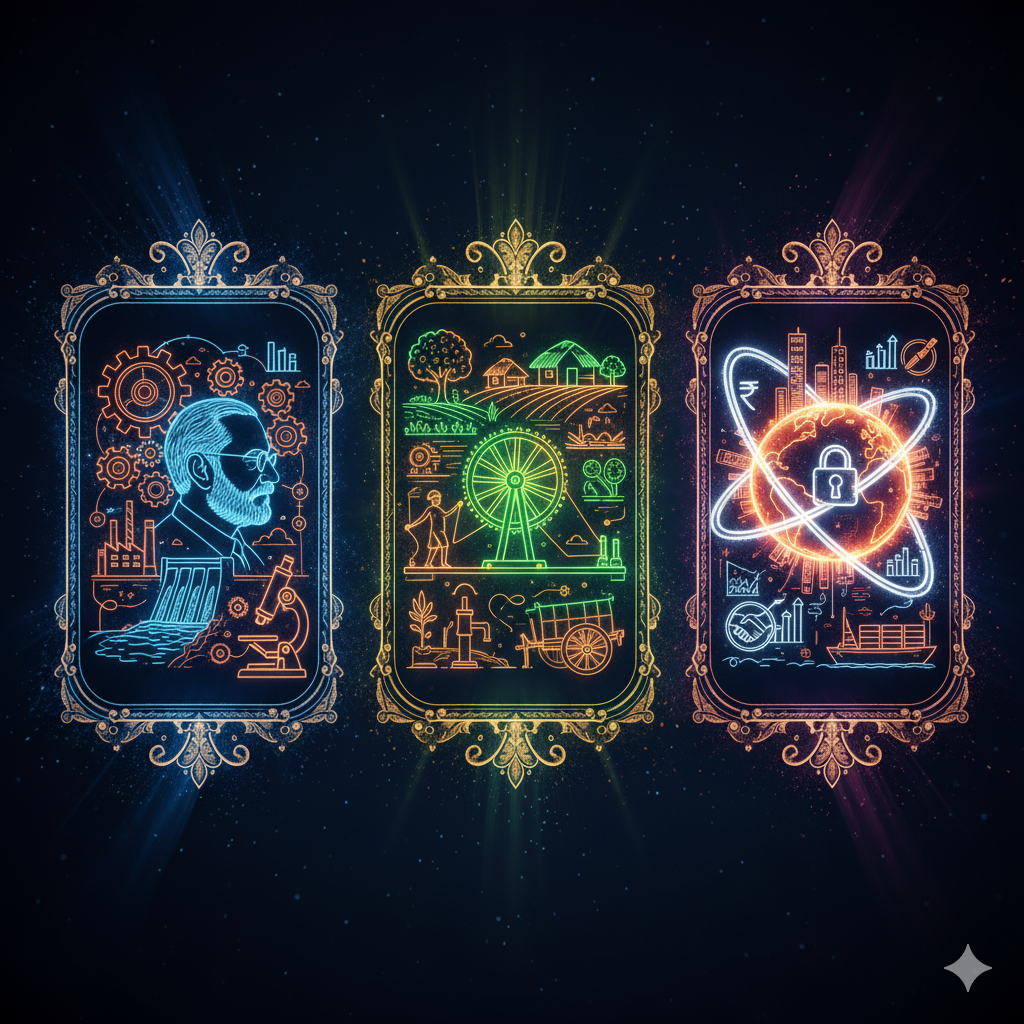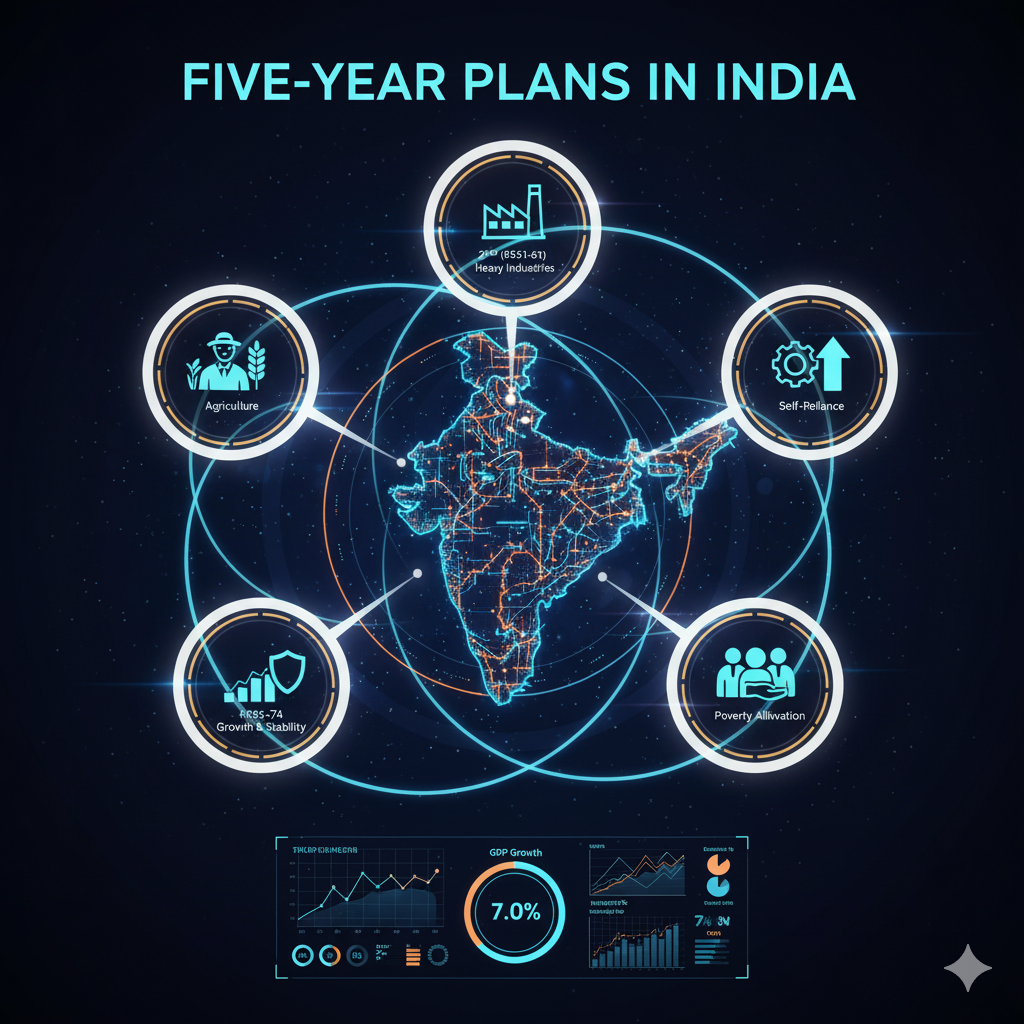India’s Chandrayaan-3 mission is a continuation of its ambitious lunar exploration program. Launched by the Indian Space Research Organisation (ISRO), this mission aims to further enhance India’s capabilities in space exploration while addressing some of the challenges faced during previous missions. Chandrayaan-3 represents a critical step in ISRO’s long-term vision for interplanetary exploration and space science.
Background: Chandrayaan Program
India’s lunar exploration program began with Chandrayaan-1, launched in 2008. This mission made a groundbreaking discovery of water molecules on the Moon’s surface, significantly advancing lunar science. The next step, Chandrayaan-2, launched in 2019, was partially successful. While the orbiter continues to send valuable data, the lander, Vikram, failed to achieve a soft landing due to technical anomalies. Chandrayaan-3 is designed to address these challenges and demonstrate India’s capability to achieve a successful lunar landing.
Key Objectives of Chandrayaan-3
Chandrayaan-3 focuses on achieving specific scientific and technical objectives. The mission is streamlined compared to its predecessor, emphasizing precision, robustness, and utility.
1. Soft Landing on the Moon
The primary goal of Chandrayaan-3 is to demonstrate a successful soft landing on the lunar surface. This involves safely landing the lander module on the Moon’s surface without damaging its components, which is critical for conducting scientific experiments and future missions.
Key technical advancements include:
- Improved landing algorithms.
- Enhanced sensors for better surface detection.
- Redundant systems to mitigate risks during descent.
2. Lunar Surface Exploration
Once the lander successfully touches down, it will deploy a rover designed to explore the Moon’s surface. The rover’s primary objectives are:
- Conducting in-situ experiments to study the Moon’s composition.
- Mapping the mineral and elemental distribution of the landing region.
3. Advancing Lunar Science
Chandrayaan-3 is equipped with instruments designed to perform scientific studies, including:
- Investigating the Moon’s regolith (surface soil).
- Measuring seismic activity to understand the Moon’s internal structure.
- Analyzing temperature variations on the lunar surface.
4. Testing Key Technologies
The mission is a proving ground for technologies that will be crucial for future interplanetary missions, including:
- Autonomous navigation for the rover.
- Precise communication between Earth and the spacecraft.
- Advanced thermal management systems for lunar conditions.
5. Exploring the Moon’s South Polar Region
Chandrayaan-3 targets the Moon’s South Pole, a region of immense scientific interest because of its permanently shadowed craters, believed to contain water ice and unique minerals. Understanding this region could provide insights into the Moon’s history and the potential for future human exploration.
Mission Components
Chandrayaan-3 consists of three primary components:
1. Lander Module (LM)
The lander is designed to carry scientific instruments for studying the lunar surface and environment. It features:
- Hazard detection and avoidance cameras for selecting a safe landing site.
- Instruments for soil and seismic studies to understand the Moon’s geology.
2. Rover
The rover is a six-wheeled, solar-powered vehicle that will explore the lunar surface. Key functionalities include:
- Conducting experiments and relaying data back to the lander.
- Analyzing lunar soil and rock samples to study mineral composition.
3. Propulsion Module
Unlike Chandrayaan-2, Chandrayaan-3 does not include an orbiter. However, the propulsion module is responsible for carrying the lander and rover to lunar orbit. It also carries a payload for scientific studies in lunar orbit.
Scientific Goals
The mission’s scientific objectives align with global lunar exploration priorities. Chandrayaan-3 aims to:
- Study Lunar Water
Building on Chandrayaan-1’s discovery, the mission seeks to examine the distribution and quantity of water ice on the Moon. Understanding water reserves is crucial for future human exploration and the possibility of using the Moon as a base for deep-space missions. - Understand Lunar Soil
The mission will analyze the chemical and mineral composition of the Moon’s regolith. This can provide insights into the Moon’s formation and evolution. - Study Seismic Activity
By measuring moonquakes, the mission can shed light on the Moon’s internal structure and thermal evolution. - Explore Solar and Cosmic Radiation
The instruments aboard Chandrayaan-3 can help study the effects of solar and cosmic radiation on the Moon’s surface, valuable for future human missions.
Significance of Chandrayaan-3
- Scientific Advancement
Chandrayaan-3’s findings will contribute to our understanding of the Moon’s origin, evolution, and resources, aiding global lunar exploration efforts. - Technological Development
The mission demonstrates India’s growing prowess in space technology, particularly in landing and rover operations. - Strategic Implications
Chandrayaan-3 strengthens India’s position as a significant player in space exploration, fostering international collaborations and partnerships. - Inspiration and Education
The mission inspires students, researchers, and the general public, promoting interest in STEM fields and boosting India’s scientific community.
Challenges in Lunar Exploration
Lunar missions like Chandrayaan-3 face numerous challenges:
- Landing Precision: The Moon’s uneven terrain makes landing difficult.
- Communication Delays: Lunar distances introduce delays in communication, requiring autonomous systems.
- Extreme Conditions: The Moon’s temperature ranges from extremely hot to freezing cold, requiring robust thermal systems.
- Energy Management: The lander and rover rely on solar power, which is limited during the lunar night.
Global Context
India’s Chandrayaan-3 mission is part of a broader global effort to explore the Moon. Other nations and organizations, such as NASA’s Artemis program, China’s Chang’e missions, and Russia’s Luna program, are actively contributing to lunar science. Chandrayaan-3 adds to this collective knowledge while showcasing India’s capabilities in space exploration.
Future Prospects
Chandrayaan-3 serves as a stepping stone for ISRO’s future missions, including:
- Gaganyaan: India’s first human spaceflight mission.
- Aditya-L1: A mission to study the Sun.
- Mars and Venus Exploration: Expanding India’s interplanetary exploration capabilities.
Additionally, the mission lays the groundwork for potential lunar bases and resource utilization, paving the way for sustainable human presence on the Moon
Conclusion
Chandrayaan-3 represents a significant milestone in India’s space journey. By focusing on precision landing, surface exploration, and scientific discovery, the mission not only advances our understanding of the Moon but also inspires the next generation of scientists and engineers. It is a testament to ISRO’s commitment to pushing the boundaries of human knowledge and exploration.
With its ambitious objectives and advanced technology, Chandrayaan-3 reaffirms India’s role as a leader in space exploration and a contributor to the global effort of unraveling the mysteries of the universe.




